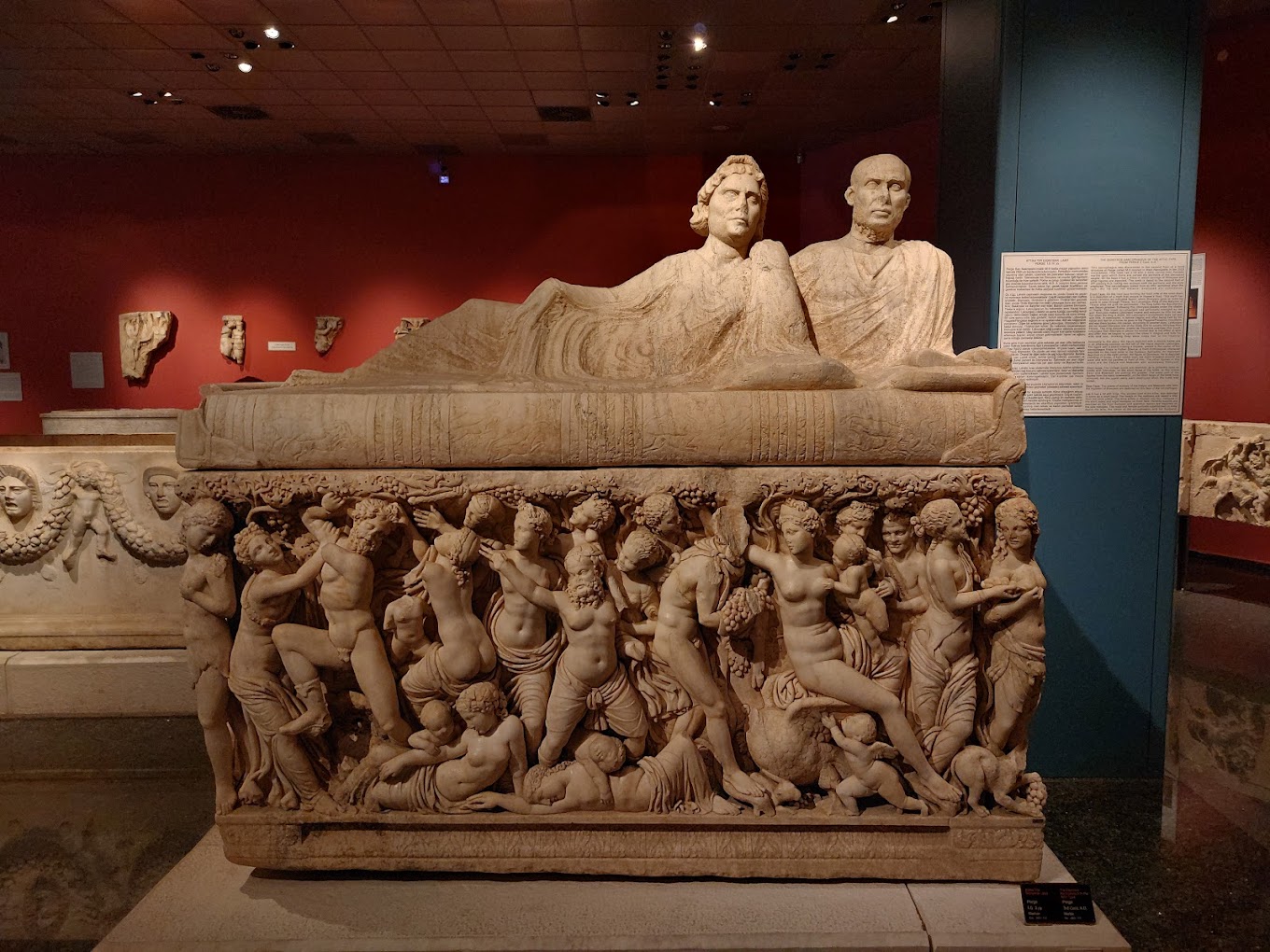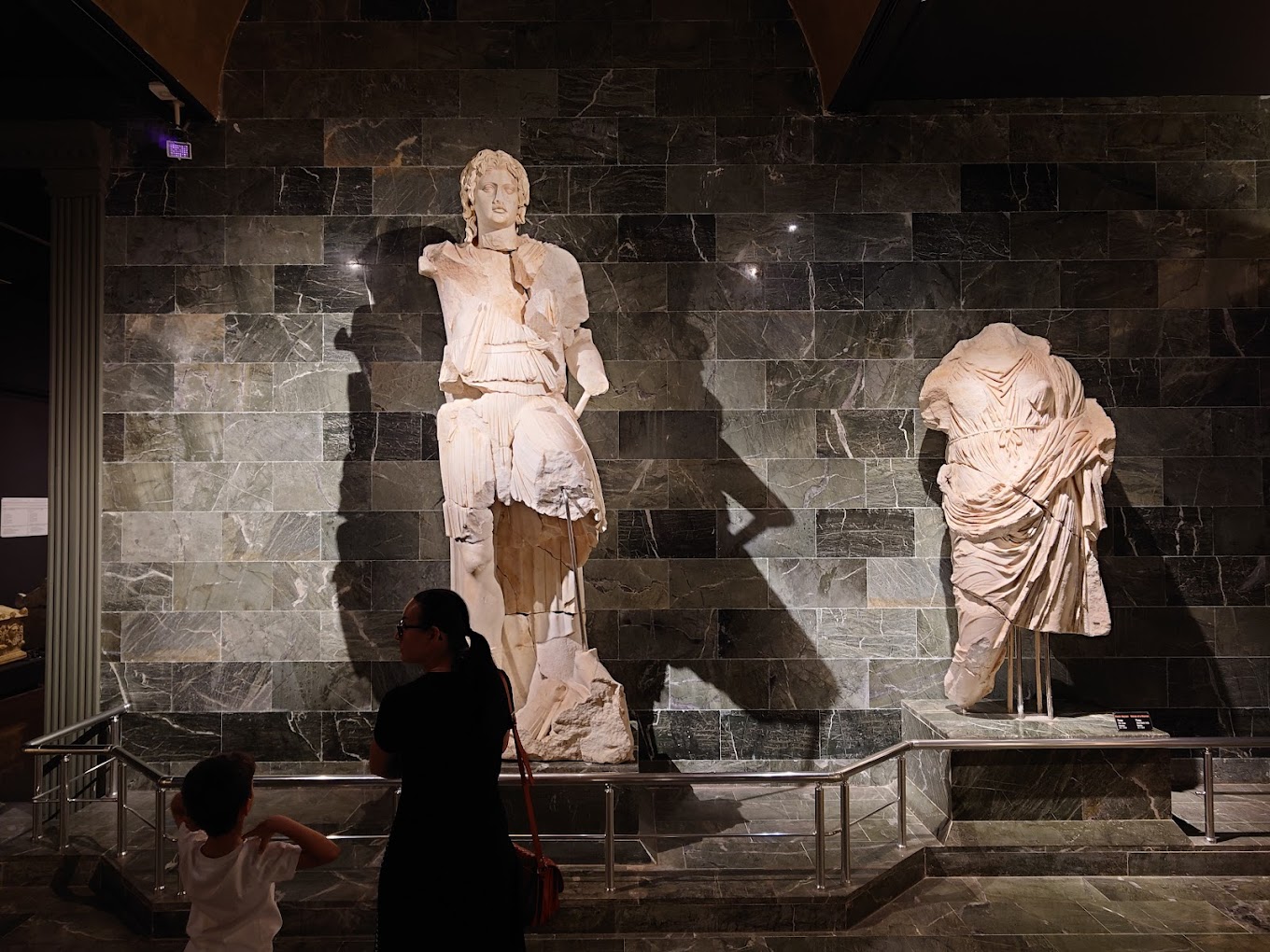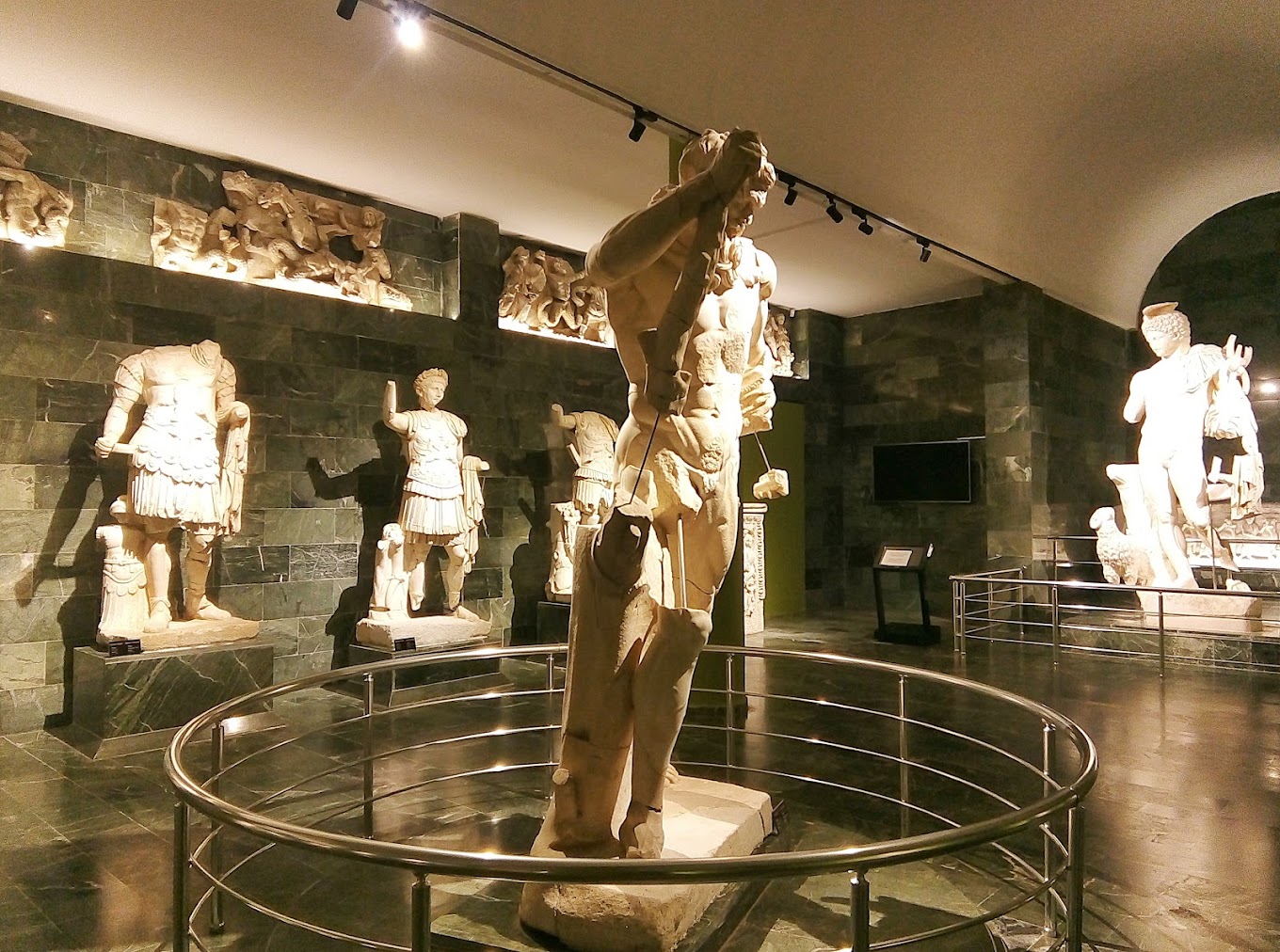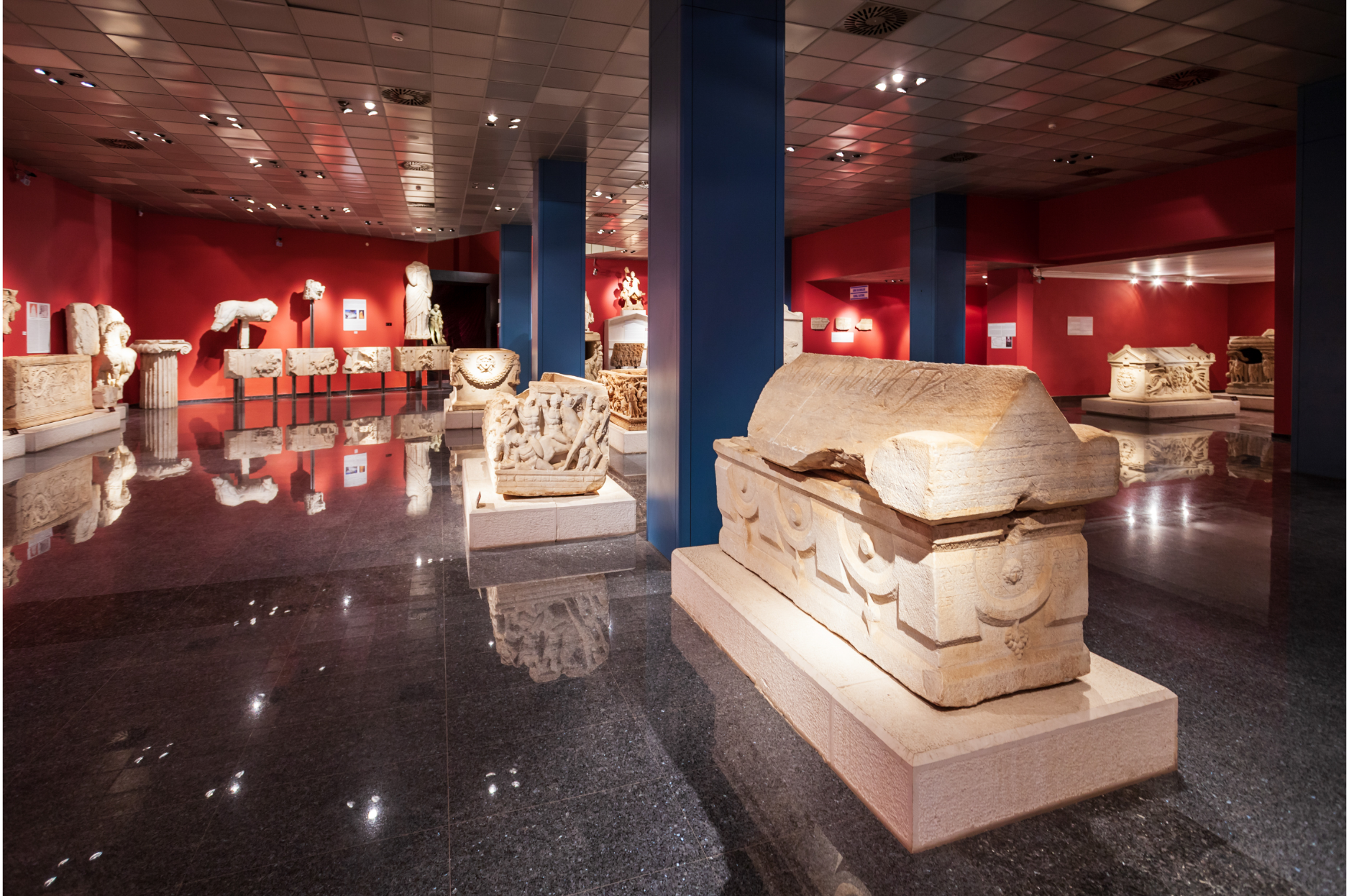When you think of Antalya, the first things that might come to mind are azure beaches and a brilliant sun. But what if I told you that this paradise sits atop a treasure chest thousands of years old? The key to this chest is located right in its heart, in Konyaaltı, at the Antalya Archaeology Museum, which won the "Council of Europe Museum of the Year" special award in 1988. In this article, we are taking you on an unforgettable tour that will top your list of things to do in the Antalya Archaeology Museum.
What makes the museum so special is not just its priceless collection, but also its mission as a guardian of heritage. Its foundations were laid through the personal efforts of teacher Süleyman Fikri Erten, who sought to save historical artifacts from being looted during the post-World War I occupation years. This spirit of preservation continues today. The museum is currently undergoing a comprehensive renovation project to better protect its invaluable artifacts and offer you an even more magnificent experience. Are you ready to discover what awaits you when it reopens its doors, targeted for completion by the end of 2026?
Examine the Statues in the Hall of Gods Up Close
The moment you step inside, you enter a world where time stands still and mythology comes to life: the Hall of Gods. This place is like a gateway to the belief system of ancient people. Before you, gods and goddesses crafted by masters who breathed life into marble greet you, having stood tall for nearly two thousand years. It is impossible not to be mesmerized by the majesty of Zeus, the king of Olympus and master of lightning; the grace of Aphrodite, the goddess of love and beauty; and the flawless aesthetic of Apollo, the god of art and light.
It is no coincidence that almost all the statues in this hall were unearthed during excavations in the nearby ancient city of Perge. As you wander through this hall, you are witnessing the very works that were once displayed in the temples and monumental fountains of Perge, the former capital of Pamphylia. These statues, created in the Roman Period during the 2nd and 3rd centuries AD and inspired by older Greek originals, are living proof of Perge's rich and advanced school of sculpture.

Witness the Elegance of the Statues from the Perge Theatre
Leaving the magnificent presence of the gods, we proceed to a place where the heart of the ancient world's social and cultural life once beat: the Perge Theatre. This hall brings you face-to-face with the statues that adorned the stage building (scaenae frons) of that massive theatre. The artistic soul of that grand structure, which once hosted 13,000 people for gladiator fights and breathtaking tragedies, continues to live on in this hall.
The works displayed here were not mere decorative objects; they were also tools of propaganda, symbolizing Perge's power, wealth, and cultural ties to the Roman Empire. The tragic statue of Marsyas, who did not forsake his art even as he was being flayed, the agile figure of Hermes, the messenger of the gods, and the charismatic portrait of Alexander the Great of Macedon showcase the artistic richness of the theatre. If you want to learn more about the incredible wealth of Perge and explore the ancient city itself, be sure to check out our Perge Ancient City travel guide.

Learn the Impressive Story of the Weary Heracles (Hercules) Statue
Every great museum has its star. If the Louvre has the Mona Lisa, the Antalya Museum has the Weary Heracles. But this statue has become legendary not only for its artistic value but also for its breathtaking story, which reads like a movie script. It is a tale of separation and a magnificent reunion that took place years later.
The story begins in 1980 when veteran archaeologist Prof. Dr. Jale İnan discovered the lower half of the statue during excavations in Perge. The splendor of the piece was evident, but its upper half was missing. Ten years later, in 1990, it was discovered that the missing piece had been smuggled out of Turkey years ago and was on display at the Boston Museum of Fine Arts in the USA. That moment marked the beginning of a long and arduous legal and diplomatic battle. As a result of the determined efforts of the Republic of Turkey's Ministry of Culture and Tourism, the upper half of Heracles was returned to its homeland in 2011, even flying back on the then-prime minister's plane. After more than thirty years of separation, the two pieces were meticulously joined by experts at the Antalya Museum, and the Weary Heracles was finally whole again at home. This reunion is one of the greatest 21st-century victories in the heritage protection struggle that Süleyman Fikri Erten began in 1919.
Alternative Places to Visit Nearby
After completing your journey through time at the Antalya Archaeology Museum, you can continue your adventure with the beauties right next door. The adjacent Atatürk Culture Park is a wonderful option for a coffee break and relaxation with a view of the Mediterranean. If you're looking for a bit more activity, a short walk or a ride on the nostalgic tram will take you to the world-famous Konyaaltı Beach, where you can dive into the cool waters of the Mediterranean. For those who wish to continue tracing the footsteps of history, Kaleiçi, with its narrow streets, bay-windowed Ottoman houses, and lively harbor, awaits you. To include all these beauties and more in your plan, don't forget to check out the comprehensive Antalya travel guide.

Frequently Asked Questions (FAQ)
1. Is the Antalya Archaeology Museum currently open, and when will it reopen? The museum is temporarily closed to visitors for a comprehensive renovation project aimed at improving the visitor experience and preserving the artifacts. The new, modern museum building is targeted for completion and reopening by the end of 2026.
2. Will the Müzekart be valid when the museum reopens? Yes, as the Antalya Archaeology Museum is affiliated with the T.C. Ministry of Culture and Tourism, the Müzekart will be valid for visits once it reopens.
3. What are the top 3 must-see artifacts in the museum? While it's hard to choose, the three iconic sections of the museum are the Hall of Gods with its mythological statues, the Perge Theatre Hall reflecting the splendor of Perge, and the world-famous Weary Heracles Statue with its incredible story of reunion.
Source: For more official information about the museum's current status and collection, you can visit the official page.


 English
English Türkçe
Türkçe